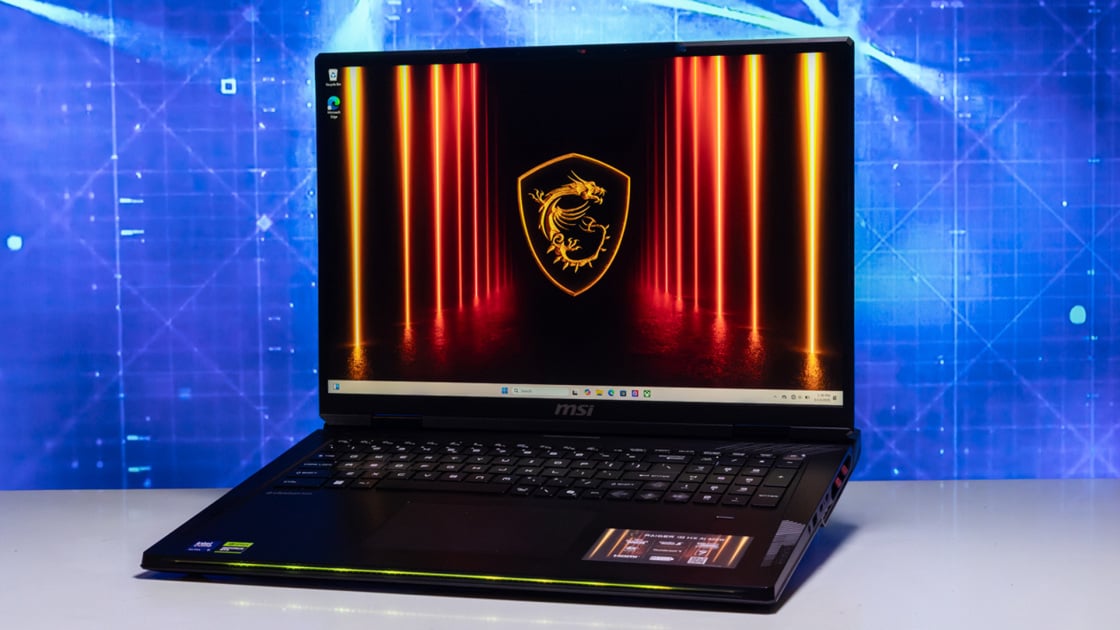Don’t miss out on our latest stories. Add PCMag as a preferred source on Google.
Intel and Chinese display-panel manufacturer BOE have announced a new 1Hz refresh rate technology that can help reduce power consumption by up to 65%. Intel also announced AI-powered device efficiency technologies that better dynamically adjust energy efficiency with device image quality, to improve battery life while retaining strong visual quality on the display.
Together, it’s hoped they’ll provide an impressive extension to mobile device battery life, particularly when in idle states.
Intel has launched a number of display technologies over the years to help reduce display power draw on mobile devices. Panel Self Refresh lets displays store static frames in memory to reduce GPU overhead, while the Intel Evo initiative encouraged laptop manufacturers to meet certain battery life thresholds. Its new 1Hz screen technology, though, could go even further.
The idea is that when the laptop user isn’t doing anything on the screen, such as viewing a static web page, or even if they step away from the system and leave it on the desktop, the device will be able to switch to a 1Hz refresh rate. This will effectively update the display only once every second, as opposed to 60 times per second for a 60Hz display—reducing the power required by the display, the CPU, and the graphics processor, which could have a significant impact on extending battery life.
Intel also announced a new Multi-Frequency Display (MFD) technology that will work on devices using Intel GPUs, as per Weixin (via WCCFTech). The operating system and GPU will work together to dynamically adjust display refresh rates as required, making sure it’s fluid and smooth when required, and when it’s less important, such as watching a video at a lower frame rate, refresh rates could be reduced to further help cut power draw and extend device battery life.
Recommended by Our Editors
Alongside that, Intel debuted SmartPower HDR technology, which it co-developed with Samsung, that will manage display voltages depending on the required brightness and the content being displayed at the time. HDR tends to consume more power than SDR modes, so HDR could be enabled dynamically when required and turned off automatically when not. Expect this technology to show up in future Samsung monitors and possibly TVs, too
For Intel, these new AI display technologies will show up in all Intel-based OEM laptops starting in 2026, though it’s not clear if it’ll only be the newest Panther Lake devices or if it will also be available in current-generation Arrow Lake products and will simply require a firmware update.

Get Our Best Stories!
Your Daily Dose of Our Top Tech News
Thanks for signing up!
Your subscription has been confirmed. Keep an eye on your inbox!
About Our Expert

Jon Martindale
Contributor
Experience
Jon Martindale is a tech journalist from the UK, with 20 years of experience covering all manner of PC components and associated gadgets. He’s written for a range of publications, including ExtremeTech, Digital Trends, Forbes, U.S. News & World Report, and Lifewire, among others. When not writing, he’s a big board gamer and reader, with a particular habit of speed-reading through long manga sagas.
Jon covers the latest PC components, as well as how-to guides on everything from how to take a screenshot to how to set up your cryptocurrency wallet. He particularly enjoys the battles between the top tech giants in CPUs and GPUs, and tries his best not to take sides.
Jon’s gaming PC is built around the iconic 7950X3D CPU, with a 7900XTX backing it up. That’s all the power he needs to play lightweight indie and casual games, as well as more demanding sim titles like Kerbal Space Program. He uses a pair of Jabra Active 8 earbuds and a SteelSeries Arctis Pro wireless headset, and types all day on a Logitech G915 mechanical keyboard.
This article was published by WTVG on 2025-10-30 14:00:00
View Original Post






